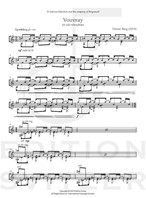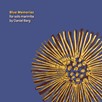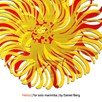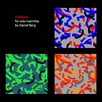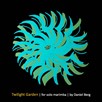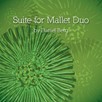
Vouvray
Composer: Daniel Berg
Instrument: Vibraphone
Level: Intermediate/Advanced
Published: 2023
Price: €16.00
Item details
-
Description +
-
As early as 1531, the monks at the Benedictine monastery of Saint Hiliare began making wine in an unconventional way. Instead of using oak barrels as usual, the monks fermented the wine in glass bottles, which gave the wine its natural bubbles. 100 years later, the monastery was visited by the monk Dom Perignon who learned the method from there and took it with him to his own district. Since then, the myth lives on that Champagne was the first district where sparkling wines were created.
When the French says Vouvray, they are referring to the sparkling wine from the Loire Valley, one of the most sought-after wines in the world. The wines, made from Chenin Blanc grapes, has a unique flavor profile that is both fruity and tart and known for its high quality and elegance, a drink perfect for parties and virtuoso vibraphone playing!
-
-
Instrumentation +
-
Vibraphone
-
-
Watch+
-
Performance by Herman Brynjulvsrud Haug
-
-
About the composer +
-
Daniel Berg is a Swedish composer, musician, and professor in classical percussion at the Royal College of Music in Stockholm and at the Academy of music and drama in Gothenburg.
In his passion to promote the marimba as a solo- and chamber music instrument, Daniel has worked intimately with a number of composers who have written original music for the instrument. This includes more than 300 world premier for solo and chamber works. Daniel Berg is a marimba artist of Bergerault and Elite Mallets.
As a composer Daniel has written a lot for solo marimba like Mistral (for Michael Burritt), Phoenix (for Robert van Sice) and Yán Jiâng (for the Taiwan World Percussion Competition). His music for percussion ensemble have been appreciated and often performed like Kroumata (for sextet) and Arctic Nights (for quintet) - all published by Edition Svitzer.
-
-
Reviews +
-
Review (Percussive Notes, February 2025)
Performing highly syncopated music creates a unique sensation, both for the performer and the engaged listener. We get a sense of floating—gliding across the plane until we find the ground, or the next downbeat in this analogy. This new work makes significant use of syncopated rhythms and grooves, giving everyone involved that incredible sense of weightless floating—like bubbles in a sparkling white wine, such as found in a glass of a French Vouvray.
The piece is easily sectioned off into three parts. The first introduces the idea of the ambiguous pulse. It is in 7/8 but not written in a manner that makes this meter obvious. Aside from the downbeat of each bar, the accompaniment in the right hand is highly syncopated, and the melodic double verticals in the left hand occur in atypical rhythmic placements. Thankfully for the performer, the rhythm and sticking of each of these measures is almost the same, with only slight pitch changes to give the feeling of forward motion. This creates an unbalanced sense of groove that will keep an audience intrigued, as they do not know where to tap their foot but feel like they should be able to.
The remaining two sections are in common time but still employ heavy syncopation, so the pulse remains somewhat ambiguous. The only other difference is that the sparse melodic content is now played more than an octave above the ostinato that is performed in unique permutations between the hands. The third section stands out by being significantly less busy: the melody is still sparse and higher in register, but the accompaniment is merely built from dotted-eighth-note rhythms. The piece concludes by backtracking through the busier music of the second section and a repeat of the 7/8 material before fading away in repetitive sixteenth notes.
If not for the amount of motivic repetition within this piece, and the fact that it only lasts three minutes, it would easily be considered an advanced piece of repertoire. The grooves Berg has written require a high level of independent dexterity between the four mallets and rhythmic acuity to accomplish the syncopations as they are intended. It also takes a mature player to bring out the melodic material when it is inside the range of the accompaniment and to be accurate when these few notes are well above this range. This is a wonderful piece to challenge the abilities of any intermediate player or to give advanced performers something fun to add to their catalog.
—Kyle Cherwinski
-
-
Credits +
-
Artwork: Nicola Lee
Photo (Daniel Berg): Harry Friberg
Printed in Copenhagen, Denmark
Copyright © Edition SVITZER
www.editionsvitzer.com
-
